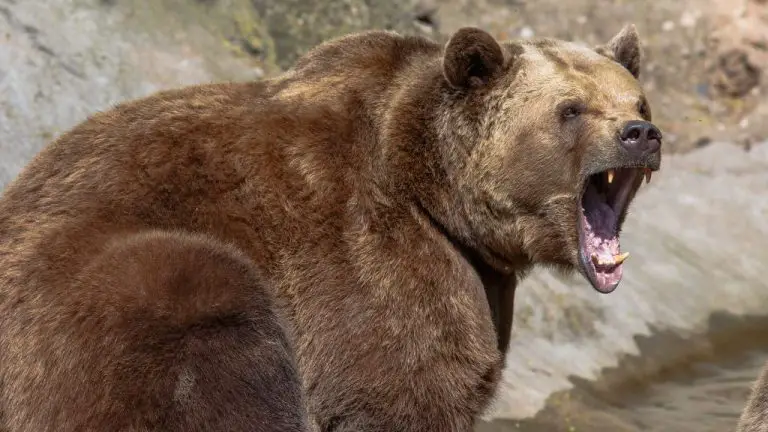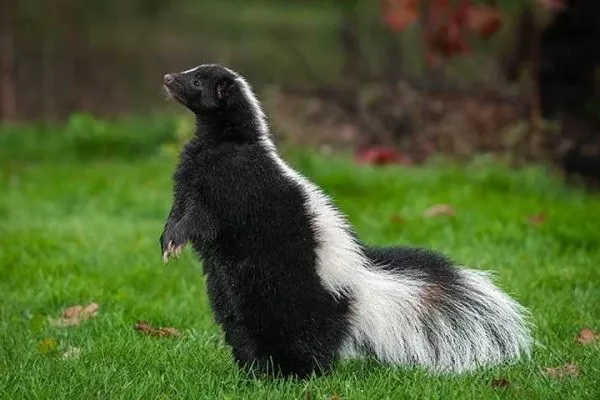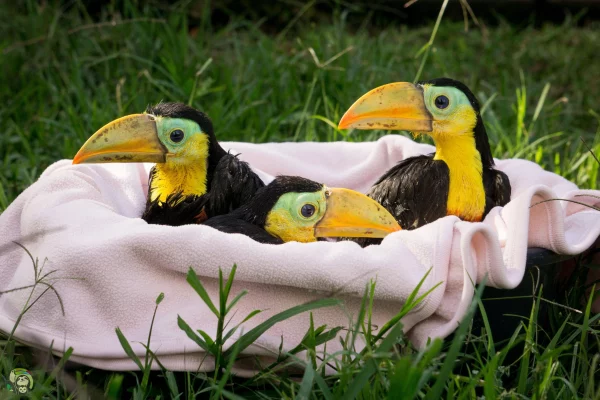One animal that often appears in books, video games, and movies is the bear. Especially in Winnie the Pooh, Paddington, and The Jungle Book, they are often portrayed as amiable and endearing anthropomorphic beings.
Toy firms, like the entertainment industry, create and sell teddy bears to give youngsters the sense that bears are pleasant and cuddly creatures. Regretfully, bears’ personalities and habits are not at all like those of the entertainment and toy industries would have you believe.
Bears are neither cuddly nor nice to humans in any manner. The calm bears stay away from humans, while the aggressive bears will attack if they feel threatened. Approximately 40 bear assaults occur worldwide each year.
This article lists the most dangerous bears in the world based on these facts. Real-life bear attacks and conceivable causes/triggers are also highlighted in this article.
A Brief Look on Bears
Large, short-tailed animals belonging to the Ursidae family are bears. There are eight species that can be found in America, Asia, and Europe, but not in Africa or Australia.
Bears are very swift even though they seem awkward. Not only can some of them climb well, but others, like the polar bear, are also excellent swimmers.
Bears eat both plant- and animal-based foods in general since they are omnivores. Nevertheless, the polar bear is an obligate carnivore that feeds on seals and walruses.
On the other hand, the giant panda is a herbivore that solely consumes bamboo.
Because their eyesight and hearing are not very good, bears rely mostly on their excellent sense of smell to seek for food.
Interesting fact: Bears don’t use sound to communicate and are usually silent. They do, however, sometimes growl when eating, when they are challenged by people or another bear, and during mating behavior.
Bears are mostly solitary animals, with the exception of the mating season, when male polar bears may congregate. They come together, split into couples, and mate privately. The males don’t help raise the babies after mating; instead, they leave the females.
Bears have varying gestation periods. Notably, in the uterus, the fertilized egg does not move. This occurrence ensures that the young will be born when the mother bear is in her winter lair and that the cubs will emerge when there is an abundance of food.
A wild bear’s life expectancy is 15–30 years. In any case, captive bears have a respectable lifespan.
Bears’ great size means that they have few natural predators in the wild. Most bear fatalities are the result of human hunting.
Moreover, bears that do not gain enough fat during the winter may starve to death.
Bear cubs’ diminutive stature makes them more vulnerable to predators and assaults. Young bears are therefore killed by predators such as wolves, mountain lions, and other bears.
People and Bears’ Interaction
Some people easily tame baby bears for use as props in circus performances. This preference has led people to see bears as kind and harmless animals rather than as potentially dangerous creatures that should be handled with respect and care.
This kind of carelessness has often led to bear and human deaths. Certain types of bears attack and murder people, while other bears feed on animals and damage crops, especially maize.
The Top 7 Riskiest Bears
We have listed the top seven most fearsome bears in the world, ranging from the Chinese giant pandas to the Arctic polar bear.
The most deadly bears in the world are as follows:
The sections that follow will look at each of these species in turn.
Grizzly Bears
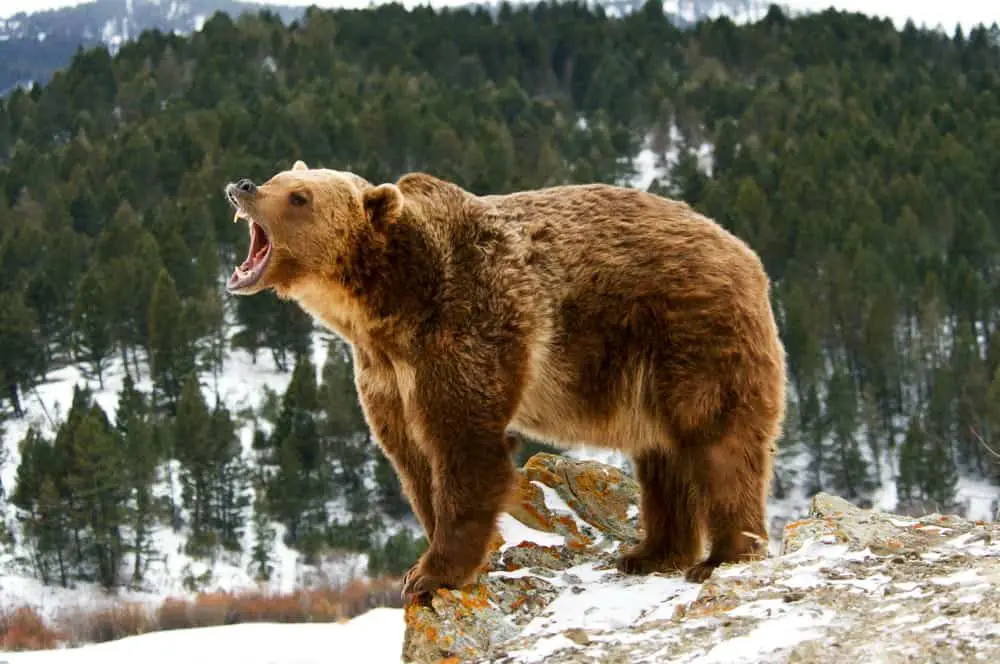
A brown bear subspecies found in North America is the grizzly bear. Before European civilization and forced hunting wiped off the majority of their population, they had formerly populated much of western North America.
These days, you may find them in Alaska, the northern and western regions of the US, as well as Canada. Although their fur may seem grizzled or white-tipped, which gives them their moniker, they are usually brown in color.
Strong apex predators like grizzly bears eat a variety of other species, including moose and rodents. Nonetheless, the principal foods consumed by this enormous monster are roots, nuts, and berries.
Interesting fact: Despite their enormous size, grizzly bears can sprint up to 30 miles per hour.
When agitated or when people get in the way of a mother grizzly and her youngster, grizzlies may be very dangerous and aggressive against people.
They are a serious threat to mankind mostly because of their amazing size. Grizzly bears may reach a maximum weight of 600 pounds and an average length of 6.5 feet. Even more terrifying are their long claws and ferocious teeth.
The massive bulk and weak claws of grizzly bears make them poor climbers. Therefore, they resist the urge to retreat from a danger by holding their ground and launching their own assault or battle. They place a high value on defending their territory and cubs since they are territorial animals.
Their characteristic brown fur with hints of white, gray, or even golden highlights makes them immediately identifiable. If you run into a bear this large in appearance, you should immediately depart in a fast car or pretend to be dead. A deadly confrontation might occur if you can’t get away or fool the beast.
Grizzly Bear Attacks: Frequencies and Reasons
Grizzlies often only come after and attack people if they feel like threats. But when they scent food, bears often search areas.
This tendency was one of the main factors in the tragic 1967 incident in Glacier National Park that claimed the lives of two young ladies who were injured by grizzlies in the park. Nowadays, humans seek to avoid areas where assaults by grizzly bears are likely to occur.
Regretfully, bear assaults have increased dramatically in the last several years. Notably, in 2011—just two months apart—grizzly bears murdered John Wallace and Brian Matayoshi. The victims of these assaults were the first grizzly bear attacks in 25 years in Yellowstone National Park.
The majority of the time, the assaults are carried out on orders from the government to hunt down and kill the grizzly bears. However, if the worst comes, it’s best to be cautious around these very hazardous giants since killing them won’t make you come back to life. In spite of all of this, the number of grizzly bear deaths in the US is increasing.
Polar Bears
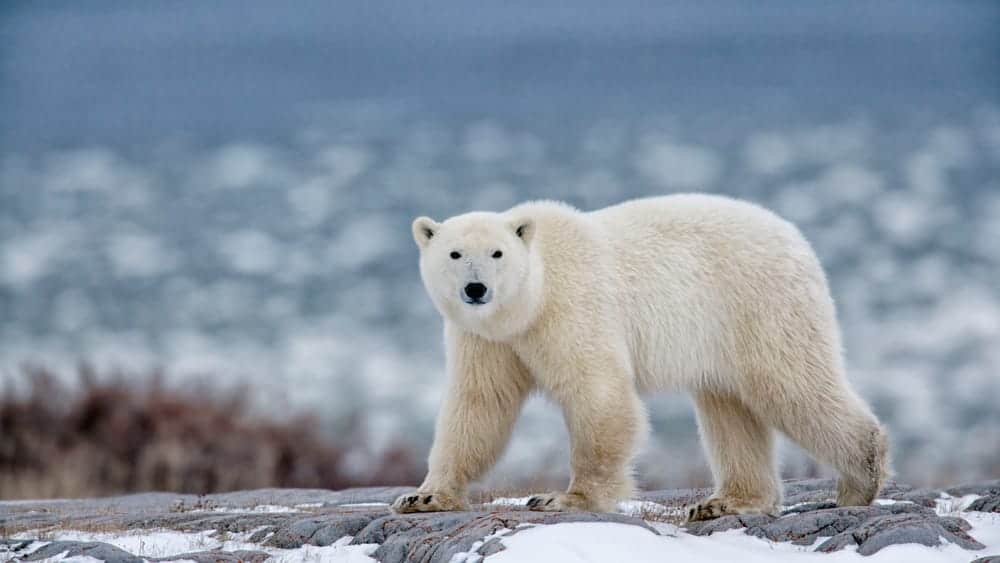
The Arctic Circle is home to the massive, white-coated hypercarnivores known as polar bears. With a head and body length of 7 to 8 feet and a weight of 900 to 1600 pounds, they are the biggest bear species currently in existence and enormous terrestrial predators.
Despite having a strong resemblance to brown bears, they have adapted to live in a smaller ecological niche. In addition, they have evolved to survive in colder regions, hunt mostly seals, and navigate ice, snow, and open seas.
Polar bears can swim rather well because they have huge, somewhat webbed front paws that they utilize for propulsion. In addition, they travel hundreds of kilometers in a direction away from the land while floating over ice sheets.
Fun Fact: Polar bears’ thick white fur protects them from the frigid climate they live in. Additionally, to protect them from icy surfaces, polar bears have a warming covering of hair and fat on the undersides of their paws. What’s surprising is that behind their white coats, they have black skin.
Even though they are graceful and beautiful animals, polar bears are fierce predators that show no fear of people. They may be hostile and dangerous due to this tendency. Furthermore, they often acquire a taste for waste in the vicinity of human lands, which brings them dangerously close to people.
In response to climate change, polar bears may be permanently relocating southward in search of fresh food supplies and a safer place to live, according to a number of observations. Humans are seriously threatened by this trend.
They will chase people, capture them, and consume them since they have no fear of humans. Though it’s very difficult to escape a polar bear, fleeing may be a person’s initial reaction when they come upon one.
Avoiding interaction with polar bears, including their pups, is the best defense against assaults by them. Fighting them won’t help either since a polar bear can kill a person with only one blow of its paws.
The Polar Bear Attack’s Events and Causes
Because these giants with white coats reside in cold climates, assaults on people by polar bears were rare until recently. But human contacts are a common outcome of the polar bears’ current southward migration. Being fierce apex predators, polar bears often result in human fatalities during these encounters.
According to the Wildlife Society Bulletin, there were 73 polar bear assaults between 1870 and 2014. Out of them, 63 people were injured and around 20 people died.
Furthermore, between 2010 and 2014, there were four years with the highest incidence of polar bear assaults. In Sentry Island, Nunavut, a polar bear attacked and killed 31-year-old Aaron Gibbons in 2018. The guy was attacked by the bear and suffered injuries.
Because of the increase in polar bear attacks, certain areas, such as Wales and Alaska, have established polar bear patrols. By using a variety of non-lethal constraints, their aim is to scare off polar bears who approach too closely to populated areas. The fact that these patrol teams were able to stop a few significant polar bear assaults has earned them praise and recognition.
Kamchatka Brown Bear
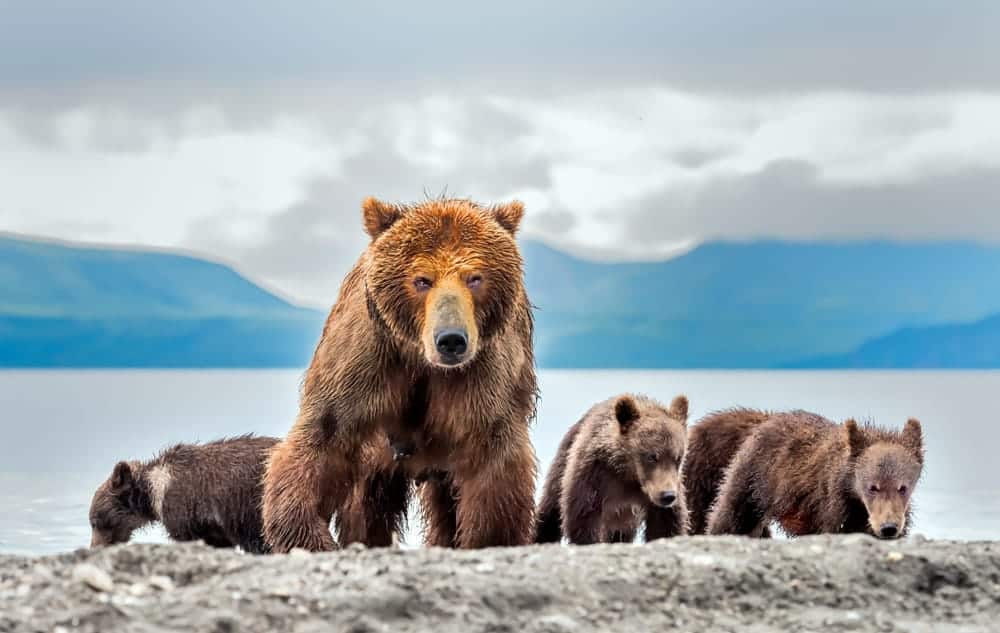
A subspecies of brown bear found in Russia and other regions of the Far East is the Kamchatka brown bear. They go by the name Far Eastern brown bears, and their name comes from the Kamchatka peninsula.
The enormous brown bears of Kamchatka, which stand 7.9 feet (2.4 meters) tall and weigh 1,430 pounds, are the largest in all of Eurasia. Their fur is usually violet-tinged and dark brown.
As omnivores, far eastern brown bears eat nuts, berries, humpback salmon, and marine animals. In the wild, they typically live between 20 and 30 years.
Nevertheless, they have a 50-year lifespan in captivity. As early as age four, their females are capable of reproducing.
Quick Fact: One of the most prized trophies in Russia is the brown bear from Kamchatka, which is a common target for trophy hunters. In order to shoot Kamchatka bears, the customers had to pay as much as $10,000, and the Kamchatka Department of Wildlife Management issued 500 hunting licenses in 2005. Thus, the economy is greatly impacted by the killing of these bears for pleasure.
Though some people don’t think they’re dangerous, these animals—which resemble enormous brown teddy bears—can become hostile if confronted, particularly when they’re defending their young. You can’t take a chance against their lethal strikes since they are also very territorial and unpredictable.
Events of Bear Attacks in Kamchatka and Their Reasons
As opposed to grizzlies and polar bears, Kamchatka bears are less likely to attack people since they would rather stay away from people. However, the closer relationship between the two species has been enhanced by the ongoing encroachment of human settlements into their native range. The brown bears of Kamchatka are fierce guardians of their areas, and they will charge at any trespassers.
Brown bear assaults have resulted in over three fatalities in less than a month, making them an issue in Romania. Moreover, some Romanians claim that these bears destroy local communities and steal agricultural animals.
Bear hunting is being encouraged as a preventative strategy in Romania and a number of its surrounding nations. Finland is now looking for bear-friendly ways to help people and bears live in harmony.
In July 2018, in the Olyutorsky District of Russia, thirty family bears besieged a platinum mining camp, killing two guards in one of the bloodiest bear assaults in Kamchatka history.
Brown bears in the Far East are being forced to relocate and come into touch with human settlements due to the ongoing population growth and hunting. As so, our actions increase the possibility of more devastating bear assaults in Kamchatka.
Sun Bears
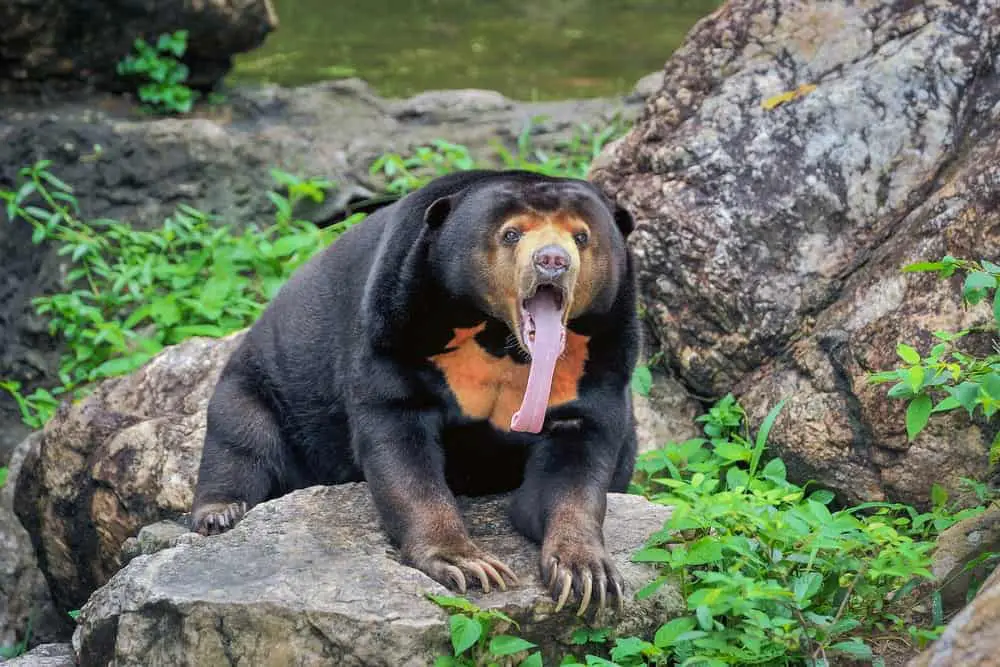
Within the bear family that inhabits the thick lowland forests of Southeast Asia, this species is the smallest. Their geographical distribution stretches from Indonesia southward to southern China and eastern India.
Despite their shy disposition, they get their name from a bib-shaped white or golden patch on their breast, which in folklore represents the rising sun.
An adult sun bear is about half the size of a mature black bear in the United States. The males of the species are five feet long and weigh 150 pounds, making them somewhat larger than the females. Their stature allows them to travel swiftly through trees, which is appropriate for their arboreal habit.
Sun bears also have the following other traits:
a robust, strong physique
little ears
A brief canine
Perfect for tropical temperatures, this stylish black coat keeps you from overheating
Long claws—more than four inches long.
An extended mandible used to extract honey from bees
Sun bears are nocturnal omnivores that feed on the following, despite what their name may imply:
Berries
origins
Aspids
berries
little birds
Snakes
Mice
Moreover, considering their relative tiny size, sun bears are among the toughest bear species. They have no taste for human flesh, despite the fact that they are very deadly to people.
Attacks by Sun Bears: How They Happen and Why
Sun bears may attack without warning, despite the fact that they do not hunt people. At least 33 people lost their lives as a result of sun bear attacks in Mizoram, India, between 2000 and 2010.
Even worse, once they start charging at you, it might be difficult to dodge them because of how persistent their assaults are. In 2017, a group of neighbors banded together to drive away a sun bear that had been attacking for about an hour.
Due to the continuous deforestation for oil palm fields, experts predict that sun bears would grow more aggressive and leave their native environment in search of food. Due to this change, sun bears and people will come into contact more often, which will increase the number of deaths on both sides.
One theory for why sun bears are so hostile to people is because poachers hunt them often. The sun bear’s flesh, claws, fur, teeth, and gallbladder are all considered valuable by poachers. Sun bears continue to pose a serious hazard to people despite their population decline.
American Black Bears
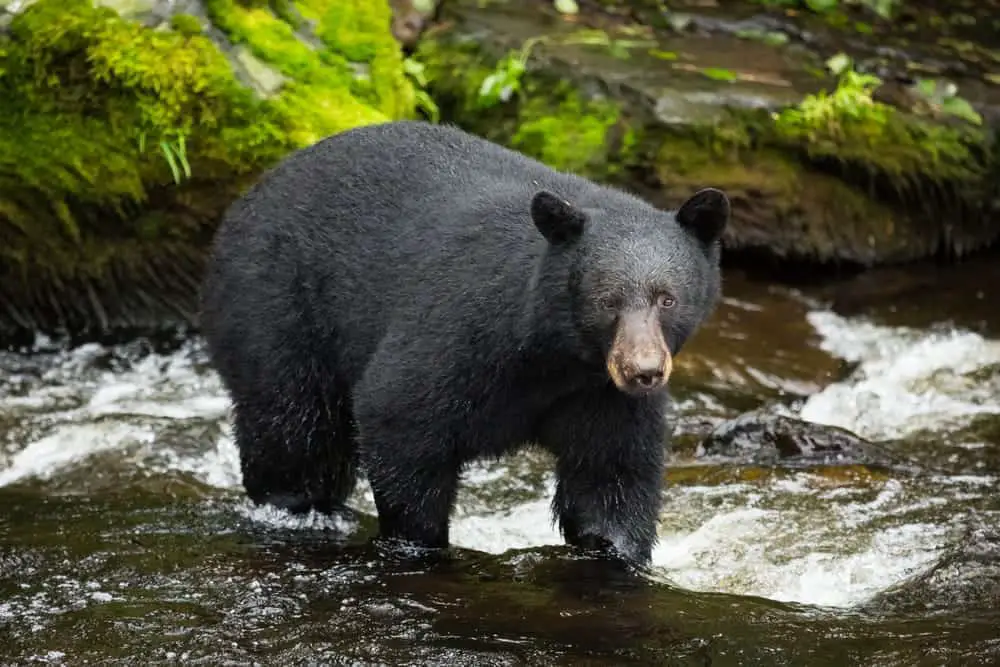
In North America, this is the most common species of bear. They mostly reside in forests, where they inhabit mountains, wetlands, and trees with ease.
Black bears are not limited to hues of black, despite their name. Rarely are some blue-gray, blue-black, cinnamon, brown, or white.
They weigh between 200 and 600 pounds and have a length of around 5 to 6 feet.
The following are among the opportunistic omnivores that bears eat:
Slugs
origins
berries
Aspids
Fish.
Mammals
Carne
Black bears can rapidly develop a liking for rubbish and human food.
Fun Fact: Bears that become used to eating people while they stay in cabins, campsites, or rural houses might develop a fear of people and often end up dead. The well-known proverb, “Please don’t feed the bears,” originated from this tendency.
Compared to grizzly and polar bears, these medium-sized bears are less threatening. Usually, they climb a neighboring tree to escape a possible danger instead of attacking. Still, the rare times a black bear has attacked a person, its razor-sharp fangs and claws have typically proved lethal.
The surprising truth is that, while pretending to be dead might assist you avoid grizzly bear attacks, black bears are not fooled by similar antics. Since black bears are skilled tree climbers, climbing a tree is therefore futile. Fortunately, bear spray may be useful in preventing a black bear assault if you chance to have it.
Events and Causes of American Black Bear Attacks
Black bear assaults are rare and often resemble a run-in with a dog. Attacks by black bears cause fatalities once a year in North America. Approximately 59 black bear assaults between 1900 and 2009 resulted in more than 63 human fatalities, according to certain investigations.
Most black bear attacks, according to Smithsonian Magazine, seem to happen in their northernmost ranges. The bears’ increased aggression could have resulted from the relative lack of food in the northern area. Furthermore, northern bears are more hostile toward people than their southern counterparts because they are less used to human interaction.
Although black bear assaults on people are relatively rare, when they do happen, there will still be losses. For example, a lady was murdered by a black bear at Red Pine Island, Ontario, in 2019.
In over fifteen years, there had not been a bear attack in the area before this awful tragedy. There are still additional black bears in the neighborhood that may be hazardous, even if the bear that attacked was killed.
Pandas
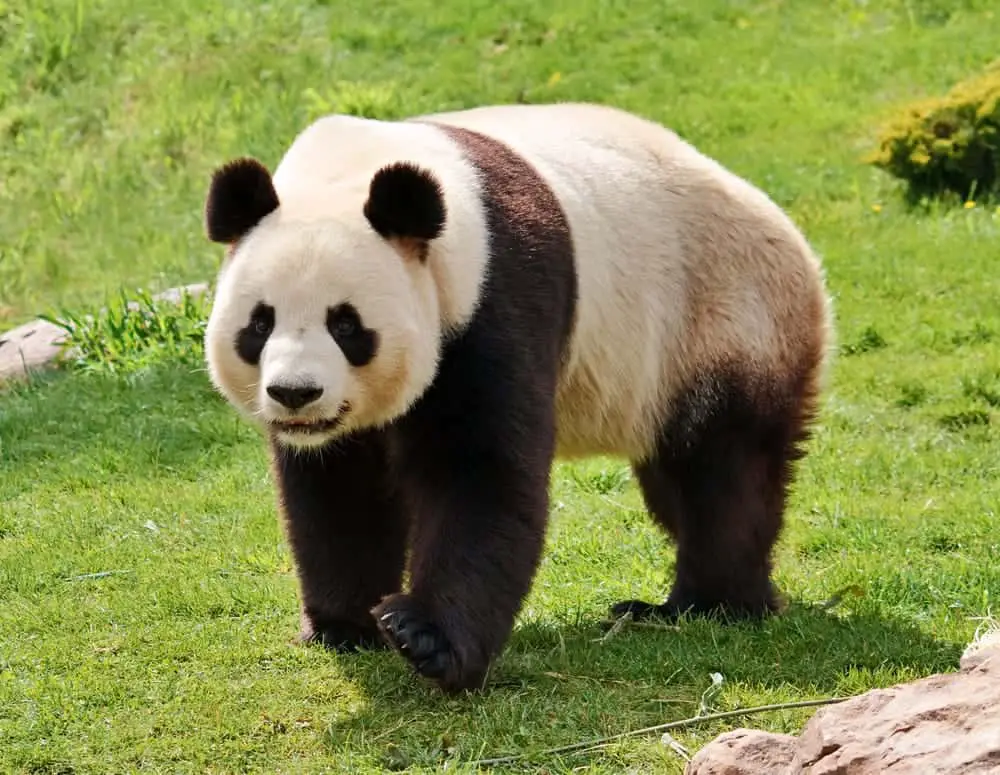
Bears endemic to China are called giant pandas. These animals, often referred to as panda bears, live in bamboo forests in the hilly parts of central China.
They may be distinguished by their large size, round face, and black and white coat. Sadly, it is estimated by the IUCN Red List of Threatened Species that there are less than 1,900 panda bears left in the wild.
Giant men may grow to a height of 1.8 meters (6 feet) and weigh over 220 pounds (100 kg). Usually, the females are smaller.
Giant pandas also have the following additional traits:
black, round ears
Dark eye pouches
white neck and face
Legs, limbs, tail, and shoulders all black
white upper body
Fun Fact: Giant pandas can stand up on their hind legs with ease, and they often roll, somersault, and sunbathe. This reminds us of Master Po Ping from Kung Fu Panda.
Pandas climb trees all the time, despite being quite awkward climbers. They could be able to swim, just as other bears.
Panda bears are unique in that they have a thumb-like expanded wrist bone that allows them to handle food with a great deal of dexterity. Being herbivores, they eat bamboo nearly exclusively.
Panda bears are generally shy and won’t harm people or other animals unless provoked. Nevertheless, they possess a tremendous bite that has the power to kill or severely maim enemies. Because this may provoke them to fight the adversary, it is thus advisable to refrain from threatening them or invading their territory.
Cases and Causes of Panda Attacks
Despite the rarity of panda assaults in the wild, several incidents involving captive panda bears have been documented. Between 2006 and 2009, the Beijing City Zoo in China had three incidents of pandas assaulting persons who tried to enter their cage.
In one of those incidents, after many efforts to free the victim from the bear’s hold, the panda refused to release the victim’s leg. The victim was able to flee the incident with a few scratches up until a zookeeper arrived.
One incident claimed the life of Guan Quanzhi, a Chinese man, who was bitten by a gigantic panda. After being bit in the leg, he needed seven hours of surgery to save his limb. Afterwards, Guan sued the local government and won $80,000, which paid for his medical bills.
Most of the time, the victims miscalculated and believed pandas to be innocuous animals.
Sloth Bears
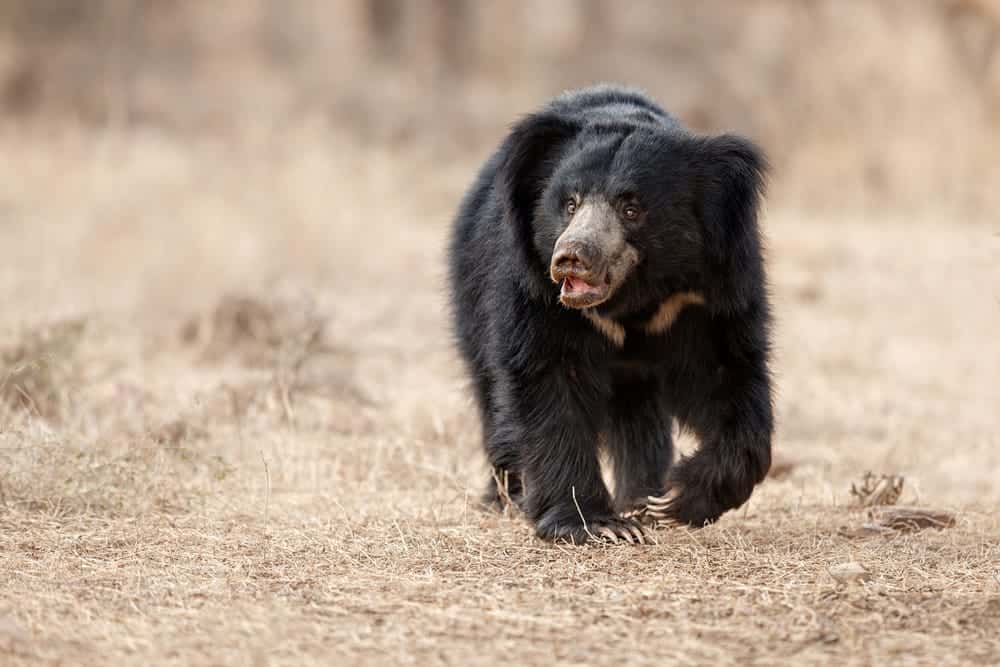
A member of the Ursid family, sloth bears are nocturnal, solitary creatures found in South Asia, which includes India, Sri Lanka, and the southern regions of Nepal. Their cream-colored snout contrasts sharply with their black fur.
Males of the species reach a maximum weight of 310 pounds at six feet in length, while females weigh 210 pounds. Usually, a white “V” or “Y” stamp on their breast identifies them.
They eat mostly termites and ants, blowing away extra soil with their strong, curved claws to enter the nest mounds and sucking the insects through a gap in their front teeth.
Fun Fact: Sloth bears are known to stand on their hind legs and show off their powerful foreclaws to potential enemies.
Despite not eating human flesh, they are nevertheless harmful to people. Their strong, sharp claws may readily tear away human flesh with ease. They also have very keen teeth, capable of maiming or even killing people.
Cases of Sloth Bear Attacks and Their Causes
Attacks by sloth bears are common, especially in India’s Mysore area. In many assaults in 1957, the notorious Sloth Bear of Mysore left 12 dead and 30 wounded.
When the bear encountered people, it would frequently act aggressively and smash their faces. In several instances, the victims’ faces were pulled entirely off their heads by the sloth bear.
Before taking its life, British hunter Kenneth Anderson pursued and eventually located the Mysore Sloth Bear for more than a month. It even acquired a taste for human flesh, partly devouring at least three of its victims, and during its time it became the deadliest bear in all of India.
In India, bear assaults are not uncommon, with the exception of the Mysore Sloth Bear. In fact, according to some academics, sloth bears are the deadliest bears on the planet.
But one can only speculate how many people these bears have murdered, since there aren’t enough official records to verify this allegation. All we know for certain is that thousands of humans have been attacked by sloth bears over the last century, and hundreds of those attacks have resulted in human deaths.
FAQs: The World’s Most Dangerous Bear Population
Are black bears dangerous?
Undoubtedly, black bears pose a threat, particularly if they develop a taste for human food. They have attacked people on many instances, sometimes even killing the victim.
What makes polar bears so deadly?
Due to their massive stature, gigantic paws, and general lack of fear towards people, polar bears are very deadly.
Are bears with polar bears the most dangerous?
Grizzlies have given humans reason to consider them the most dangerous bears, despite the fact that polar bears are very lethal and strong.
Which kind of bear is more deadly, brown or black?
More hazardous than black bears are brown bears, especially the grizzly bear. Brown bear attacks outnumber black bear attacks in terms of frequency.
Which North American bear is the most dangerous?
Known for their frequent assaults on people and livestock, grizzly bears (Ursus arctos horribilis) are the most deadly bears in North America.
Final Thoughts
Bears are magnificent creatures, but they are also dangerous giants that need to be revered and handled carefully. Fortunately, you can survive a bear assault by taking some precautions.
Playing dead is successful against some brown bears and grizzlies, but it is useless against black bears and other kinds. As it’s almost impossible to outrun a bear—even if you’re Usain Bolt—your best option is to back off gradually. Running away might cause the bear to pursue you.
Carry bear spray at all times if you live in or visit areas where bears are common. It can be your sole defense against a possibly fatal bear attack.

